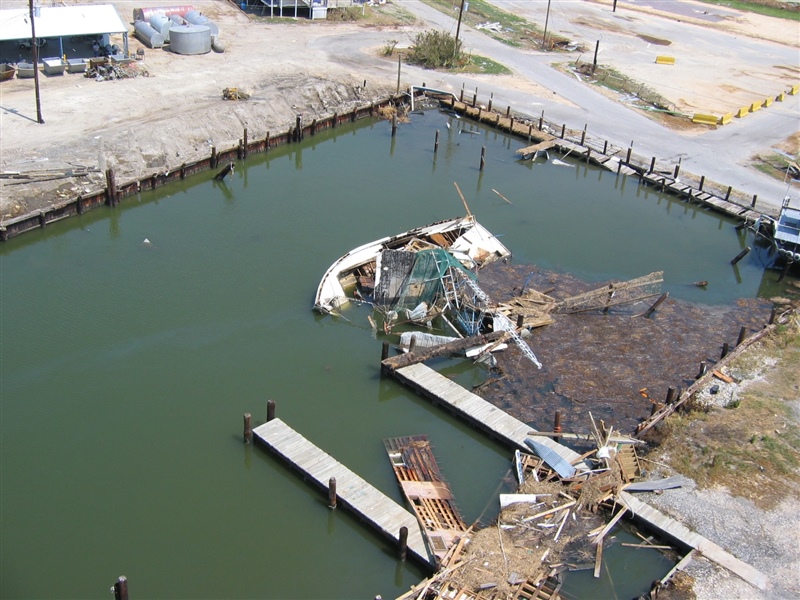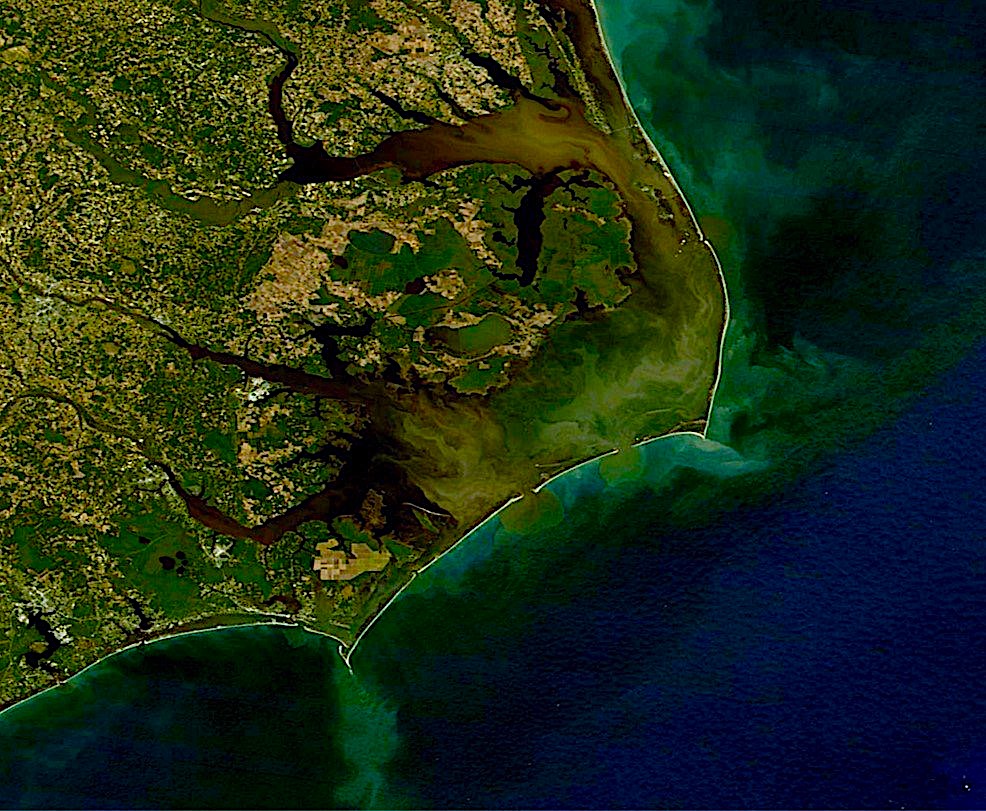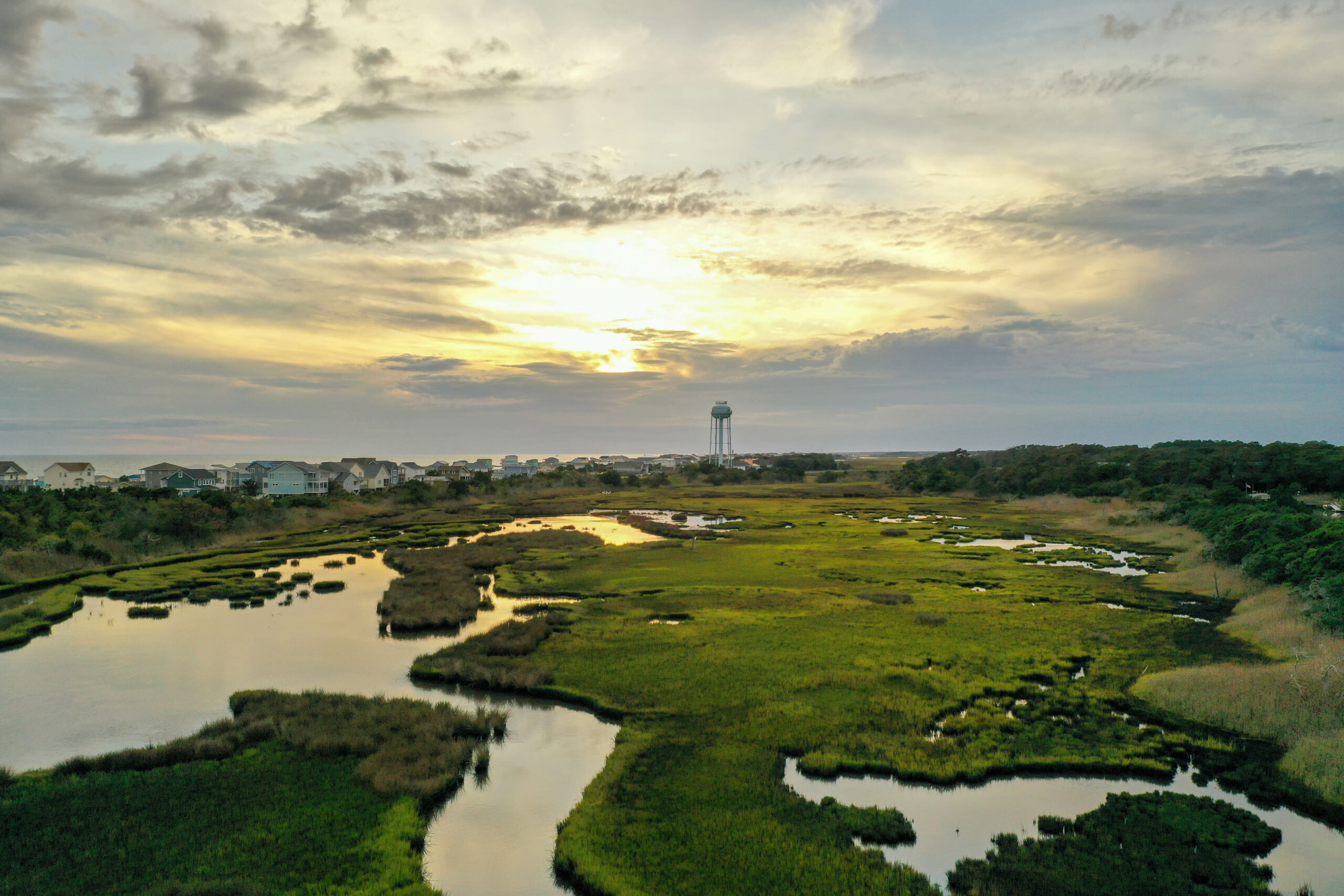SEA GRANT PROGRAMS HELP STORM VICTIMS

When Hurricane Katrina hit Mississippi’s Gulf Coast, the strong winds pushed Tom Becker’s charter boat near a tree top, almost 15 feet off the Tchoutacabouffa River.
To help assess the boat’s damage, Becker turned to the Missisippi-Alabama Sea Grant Consortium.
“Sea Grant helped us get our business back in order and provided advice,” says Becker. “It was the only place I knew to go to get help with my boat. Now I am back in business and have taken groups out 41 times since the storm.”
Becker is just one of many charter boat captains, commercial fishers, seafood dealers and other constituents who were helped by Mississippi-Alabama Sea Grant and Louisiana Sea Grant.
“Overnight, we went from our role as educational advisors to storm recovery advisors,” says Dave Burrage, extension professor of marine sciences for the Mississippi-Alabama Sea Grant Consortium. “Our constituents called us about everything from where to get well water tested to how to get mold off the ceiling.”
Mike Liffmann, associate executive director of Louisiana Sea Grant, had a similar experience. “It changed my job for the rest of my career,” Liffmann states on the National Oceanic & Atmospheric Administration (NOAA) Coastal Services Center Web site.
“It is hard to see nonpoint source pollution in marinas as a priority when the marinas no longer exist.”
FISHING INDUSTRY LOSSES
Hurricanes Katrina and Rita struck the center of commercial and recreational fishing along the Gulf of Mexico coast, which produces 10 percent of the shrimp and 40 percent of the oysters consumed in the United States, according to a 2005 Congressional Research Service (CRS).
“Initial losses to seafood production from Katrina were estimated at $1.1 billion for Louisiana and may exceed $200 million for Alabama, exclusive of infrastructure,” the report says. “Mississippi’s losses were comparable to Alabama. Additional damages from Hurricane Rita may bring Louisiana losses to nearly $2 billion.”
In Orleans Parish, which includes the city of New Orleans, as well as several small communities, Pete and Clara Gerica lost their home where they also processed seafood. The strong winds from Katrina destroyed their large shrimp boat, small craft and mullet boat.
“Only my 21-foot skiff survived,” says Pete Gerica. “My mother and dog ended up in a tree across the street, and my wife held onto to a floating dock. I used the boat to get them out.”
With the help of a Louisiana Sea Grant coastal advisor and agent, the Gericas cleaned up debris in their yard.
“Both Rusty Gaude and Mark Schexnayder worked for two days to help clean up debris from our swimming pool and yard,” says Gerica.
Now, the Gericas are trying to get their life back together. He is using a rod ‘n’ reel to fish one day a week, and his wife is working a couple of days a week at a local farmers’ market.
“Outside of Sea Grant and fishing groups, we have not gotten much of anything,” he adds.
The storm also damaged and destroyed Louisiana Sea Grant’s field offices, and the staff is still in temporary facilities. The Mississippi-Alabama program lost three buildings, a hatchery and the air conditioning in its remaining office building on Dauphin Island.
SEA GRANT OUTREACH
Despite the losses, both Sea Grant programs have provided a variety of services for the public.
The Mississippi-Alabama staff created outreach material for many Vietnamese-speaking fishers in the area whose livelihoods were destroyed in the storm.
“Sea Grant was on the forefront in helping commercial fishermen,” says commercial shrimper Steve Bosarge. “They helped to start a fund for lost gear for commercial fishermen.”
The team also worked with the U.S. Coast Guard and others to clean up debris on oyster reefs in the Mississippi Sound.
In addition, Sea Grant staff members participated on the Mississippi Governor’s Commission for Recovery, Rebuilding and Renewal, to develop a comprehensive recovery plan for the state.
And Sea Grant colleagues from around the country donated boats and other material for the recovery effort.
Several groups from Valdez, Alaska, donated a 60-ton Marine Travelift that was used to move fishing boats in and out of the water in Plaquemines Parish. Through a combined effort of Louisiana, Washington and Alaska Sea Grant programs, as well as the Federal Emergency Management Agency (FEMA), the Pacific Coast Congress of Harbormasters and the Valdez Port, the boat lift was used to pull boats from bayous, backyards and parking lots.
In Louisiana, the Sea Grant staff also has spearheaded other projects.
Using satellite images, geographic information systems and other technology, Louisiana Sea Grant marine extension agent Thomas Hymel developed Hurricane Rita storm surge maps for St. Mary, Iberia and Vermillion parishes.
Originally created for rice and crawfish farmers, the maps caught the attention of the insurance industry, homeowners and school children.
“The Federal Emergency Management Agency wants to use the maps in future planning efforts dealing with large storm surges,” says Hymel. “Homeowners want them to see the flooding impact beyond their immediate neighborhoods. Students have used them for science projects.”
The Louisiana Sea Grant staff also set up one source of “Disaster Recovery Resource” on its Web site. Because of the program’s combined efforts on the Internet, they received a national Apex communications award.
“We averaged 9,300 page views in October and November,” says Liffmann. “In December and January, we had 6,000 page views.”
To help those affected by the two storms navigate FEMA programs and related legal issues, Louisiana Sea Grant Legal Program developed information sheets on Louisiana’s building codes, the National Flood Insurance Program and other reconstruction matters. And Liffmann says the post-Katrina recovery efforts are just getting underway.
“We’re starting to think and plan for the rebuilding phase, which is certain to take many years,” he says.
“Many coastal communities are still living one day at a time. But I am hopeful that at the end of the day, we’ll be able to return to live and work in safer communities, and that as a society we have a greater appreciation of the risks involved.”
To find out more about Mississippi-Alabama Sea Grant’s work after Katrina, visit the Web: www.masgc.org.
For more about Louisiana Sea Grant’s efforts, go online to: www.laseagrant.org/resources/hurricane.
To view the fact sheets go to: www.laseagrant.org/sglegal/publications/other/fema/.
The National Sea Grant Law Center also conducted a book bag collection project for school children.
This article was published in the Autumn 2006 issue of Coastwatch.
For contact information and reprint requests, visit ncseagrant.ncsu.edu/coastwatch/contact/.
- Categories:


